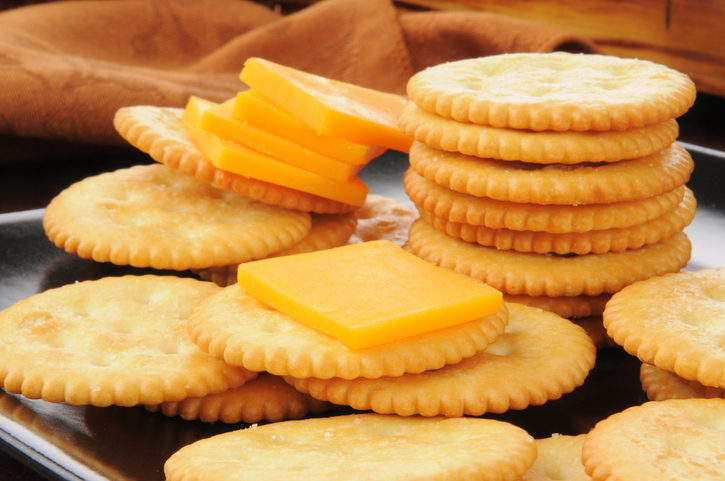The Shocking Truth About How Baby Carrots Are Made
Baby carrots, those bite-sized snacks adorning grocery store shelves and lunch boxes, seem like a convenient and healthy choice for snacking on the go. However, a closer examination reveals a story that’s not as wholesome as it appears. From their production methods to health concerns, the journey of these baby carrots raises important questions about our food system.
The Making Of Baby Carrots
Contrary to popular belief, baby carrots are not a special variety of carrot grown for their petite size. Instead, they’re actually full-sized carrots that undergo a rigorous process of transformation before landing on our plates.
- Carrot Selection: The process begins with the selection of mature, full-sized carrots, often deemed unsuitable for sale due to imperfections like shape, size, or blemishes.
- Peeling and Shaping: These carrots are then peeled and cut into uniform, bite-sized pieces using industrial machinery. This process discards a significant portion of the carrot, contributing to food waste.
- Bleaching: To maintain their bright orange color and prolong shelf life, baby carrots are often washed in a chlorine solution, commonly referred to as bleach. While the FDA considers this practice safe at regulated levels, concerns linger about potential health risks associated with consuming chlorine residues.
- Packaging: Once washed and dried, the baby carrots are packaged and shipped to retailers for sale.
Health Concerns Surrounding Baby Carrots
Despite their convenience, baby carrots raise several health concerns that consumers should consider:
- Chlorine Exposure: While the FDA regulates the use of chlorine in food processing, some individuals may be sensitive to residual chlorine in baby carrots. Prolonged exposure to chlorine has been associated with respiratory issues and skin irritation.
- Nutrient Loss: The peeling and shaping process of baby carrots result in the loss of a significant portion of the vegetable, including valuable nutrients found in the outer layers. This nutrient loss diminishes the nutritional value compared to whole, unprocessed carrots.
- Cost Considerations: Baby carrots often come with a higher price tag compared to whole carrots, despite being made from the same vegetable. This increased cost, coupled with the wasteful production process, raises questions about the sustainability of consuming baby carrots.
The Internet Is Losing It Over These Carrots
Do yourself a favor and go on Instagram and do a search in the search bar for “baby carrots.” There are many Instagram influencers who have broken down the concerning way that baby carrots are made.
The Case For Eating Whole Carrots
In light of these concerns, many nutritionists and health advocates recommend opting for whole carrots over their baby counterparts. Whole carrots offer several advantages:
- Nutritional Value: Whole carrots retain their natural skin, where a significant portion of nutrients like fiber and antioxidants reside. Consuming whole carrots ensures you’re getting the full spectrum of nutrients that nature intended.
- Cost-Effectiveness: Whole carrots are often more affordable than baby carrots, making them a budget-friendly option for incorporating into meals and snacks.
- Reduced Waste: By choosing whole carrots, consumers can help minimize food waste by utilizing the entire vegetable, from root to stem. This sustainable approach aligns with efforts to reduce environmental impact and promote responsible consumption.
If You Want “Baby Carrots” Make Them Yourself
If you want to avoid the chlorine bleach and the high costs of buying baby carrots in the bag, do this instead. Buy a bag of organic full-sized carrots at the grocery store. Bring them home and peel the skin off the carrots. Cut the tops off. And then slice them into quarters (or however the heck you want to to make them smaller in size!) By doing it this way, you are saving money, and helping your health.

Instead of buying the baby carrots at the store do this. Buy the whole bag of carrots, and cut them yourself! It’s safer, cheaper and healthier and here’s why!
15 American Foods That Are Illegal In Other Countries
We Love These American Foods, But Other Countries See The Dangers
If you live in America (which we all do), chances are you’ve eaten these American foods. I mean, how do you avoid them? Food companies have made it their mission over the years to sell products with fancy marketing. Sadly, many of them include terrible ingredients for our bodies and minds.
Why are these products so bad? That’s a great question, and one we will dive into. To make it simple to understand, all fifteen of these American food items include either dyes, preservatives, flavorants, and/or pesticides. When these are added to our foods, there is a higher chance of health and even behavior issues.

Ritz Crackers seem to be a staple here in America. But in many countries, you can’t even buy them because they are so unhealthy for people.
According to Forbes, 129 million kids worldwide from the ages of 5-19 years old have ADHD. But is there a correlation between ADHD and the food that our children are eating? The Child Mind Institute conducted a study about just that, which you can read about here. In a nutshell, ADHD is not caused by eating a sugary diet, but it definitely makes the symptoms of ADHD, and other behavioral issues in children, worse.
The Instagram Post That Initially Inspired Me
Thanks to @TheOliveOilQueen and @Reallytanman on Instagram for doing the initial research and putting this list together. I have also gone a step further and provided links and information that you can take with you next time you go to the grocery store.
Knowledge is power! The more we know about what we are putting inside our bodies, the healthier we can be in the long run.
Why Clean Your Fruits And Veggies?
Before we break down these 15 food that are illegal in other countries, why is it important to buy organic and clean your fruits and vegetables?
According to EWG’s 2022 Shopper’s Guide to Pesticides in Produce, “More than 90 percent of samples of strawberries, apples, cherries, spinach, nectarines and grapes tested positive for residues of two or more pesticides. Kale, collard and mustard greens, as well as hot peppers and bell peppers, had the most pesticides detected, 103 and 101 pesticides in total, respectively.” So, wash your fruits and veggies, because the long-term effects of pesticides can be harmful.
15 Foods That Are Banned In Other Countries That The US Still Sells In Stores
1. Twinkies

(Photo by Kevork Djansezian/Getty Images)
“High fructose corn syrup and hydrogenated oils are bad, but it’s the Yellow 5 that signed the death warrant on Twinkies.” – @TheOliveOilQueen & @ReallyTanMan
The EU requires warning labels on artificial dyes. And countries like Austria, Finland and Norway don’t even take the chance of putting Twinkies on their shelves.
Read about Yellow 5 dye and the horrible health effects here.
Yellow 5 dye can be found in foods like: Cubed or powdered chicken broth, Breakfast cereals, Jello, Kool-Aid, Pasta, Pancake mix, Frosting, Pickles, Macaroni and cheese, Creamy orange cheeses, Yogurt, Butter and margarine, Ice cream, Popsicles, Many sodas, Alcohol mixers and some beers, Boxed dinners (such as cheese-flavored rice or pasta), Flavored milk, Orange-colored chips
2. Stove Top Stuffing

Shutterstock
“A combo of beta-hydroxy acid (BHA) and butylated hydroxytoluene (BHT) take this off the menu in Japan, the UK and many European Countries”
Read about BHA and the health effect here. Read about BHT here
BHA’s can be found in the following foods/products: BHA is added to butter, lard, meats, cereals, baked goods, sweets, beer, vegetable oils, potato chips, snack foods, nuts and nut products, dehydrated potatoes, and flavoring agents.
BHT’s can be found in the following food/products: chewing gum, active dry yeast, frozen convenience foods, prepared cereal products, prepared snacks, dried and processed meat, potato flakes, enriched rice products and shortening.
3. Coffee-Mate Coffee Creamer

(Photo by Andrew Burton/Getty Images)
“Hydrogenated soybean and cottonseed oils got Coffee-mate banned in Austria, Hungary and several Scandinavian countries.”
Read about the health effects of hydrogenated soybean here. Read about the health effect of cottonseed oil here.
Hydrogenated soybeal oil can be found in food products such as: margarine, fried foods, baked goods, coffee creamers, crackers, pre-made dough, vegetable shortening, microwave popcorn, potato chips, packaged snacks.
Cottonseed oil can be found in products such as: potato chips, cookies and crackers, margarine, mayonnaise, salad dressing.
4. Ritz Crackers

(Photo by Joe Raedle/Getty Images)
“Banned in Australia, Switzerland, Hungary, Iceland, Norway and Denmark… Hydrogenated cottonseed oils.”
See above about the dangers of hydrogenated cottonseed oils.
5. Skittles

Photo by Patrick Smith/Getty Images)
Skittles contain Yellow 5 an Yellow 6 (both very bad), but the country of Norway banned Skittles because the candy contains Titanium Dioxide.
Read about the health effect of titanium dioxide here.
Titanium dioxide can be found in products like: Milk, Coffee creamer, Salad dressing, Candy and sweets, Chocolate, Chewing gum, Snacks, Sauces, Vitamin supplements
6. US Pork

“Ractopamine is an animal feed additive used in U.S. pigs. It’s linked to several major health issues in humans and animals. US pork is banned in China, Russia, and the EU.”
Read about ractopamine and the health effects here.
Ractopamine is the active ingredient in products marketed in the US as: Paylean for swine, Optaflexx for cattle, and Topmax for turkeys.
7. Pre-Packaged Ground Beef

(Photo by Justin Sullivan/Getty Images)
The pink slime that you find in the pre-packaged beef is “…a beef by-product prepared with ammonia gas and used as a filler in ground beef. US beef is banned in the EU.”
Read about the pink beef slime here.
Ammonia gas can be found in: Ground beef, cleaning products, some Kraft Foods that turn milk into cheese (think Velveeta).
8. Swiss Rolls

(Photo by Topical Press Agency/Hulton Archive/Getty Images)
Swiss Rolls, while they are brown and white in color, include dyes like Yellow 5 and Red 40. They are banned in Norway and Austria.
9. Maraschino Cherries

(Photo by Tom Enos/Cherry Marketing Institute via Getty Images)
“Red 40 has been linked to allergies, migraine, and mental disorders in children.” Why would we EVER give our children food items with Red 40? Maraschino cherries are banned in Austria, France, Finland, Norway and the UK.
10. Farmed Salmon

“Farmed fish are fed a chemical cocktail of feed including methyl mercury and dioxins. Not to mention antibiotics.” Countries like Austria and New Zealand don’t go near farmed-raised fish.
Read about the health issues of methyl mercury here.
Methyl mercury can be found in products such as: fluorescent lights, batteries, and polyvinyl chloride.
11. US Milk

(Photo by Getty Images)
“rGBH, also known as rBST, is a man-made growth hormone fed to dairy cows to boost milk production. US milk is banned in Japan, Canada, New Zealand, Australia and the EU.” Always buy organic when it comes to milk and if you can locally source your milk from local farms, even better.
sBST can be found in milk products that are then turned into cheese, ice cream, dairy products, butter, yogurt.
12. Mountain Dew

(Photo by Justin Sullivan/Getty Images)
“…Dew used to contain Brominated Vegetable Oil. Consuming bromine has been linked to headaches, memory loss, skin issue and more.” It was/is banned in Japan and the EU. BVO is no longer used in Mountain Dew (unless they do a “Mountain Dew Throwback” beverage), but it is still found in Sun Drop, made by the Dr. Pepper Snapple Group.
Bromated vegetable oil can be found in: Numerous generic citrus sodas including; “Mountain Lightning”/Walmart sodas, “Clover Valley”/Dollar General sodas, “Orangette” and Stars & Stripes.
13. US Chicken

(Photo by Justin Sullivan/Getty Images)
US chicken is banned in the EU because it is washed with chlorine. American chicken processors do it to “protect consumers from food-borne diseases.”
Chlorine can be found in food products such as: tomatoes, celery, olives, lettuce and seaweed. It’s also found in many canned vegetables due to the salt added to help preserve them. Ham, bacon, corned beef, organ meats, salami and sausages, prawns, canned tuna, scallops, called salmon, raw oysters, mussels, lobster, crab, cod, Milk chocolate, toffee, peanut butter, canned soups, tomato sauce, mayonnaise, French dressing, dried coconut, roasted and salted peanuts, scrambled eggs and many baked goods.
14. Froot Loops

So many dyes and chemicals, countries like France, Austria, Norway and Finland have banned Froot Loops.
15. Conventional Corn

“US Corn is commonly sprayed with atrazine. Atrazine is linked to birth defects and it’s banned in 44 countries.”
Read about the pesticide here.
Atrazine is found on these common items: field corn, sweet corn, sorghum, and sugarcane.
RELATED: Fragrances Are Horrible For Your Health
https://country1025.com/listicle/these-13-household-items-contain-smells-that-are-harmful-to-your-health/
RELATED: There's Some Crazy Things We Do In America Compared To Other Countries
https://country1025.com/listicle/these-things-are-illegal-in-america-but-totally-fine-in-other-countries/


